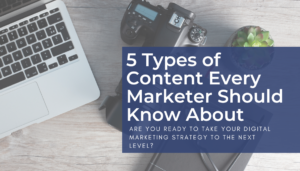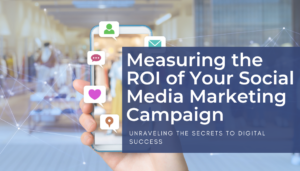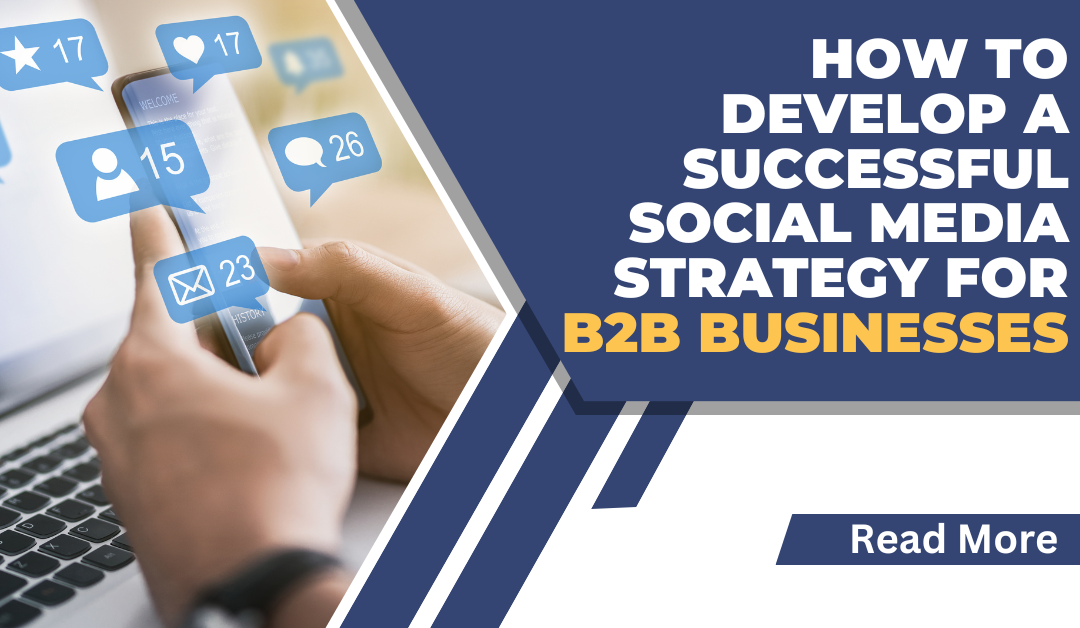Social media has become a powerful tool for businesses to connect with their audience, and for B2B businesses, it’s no different. A well-executed social media strategy can help B2B businesses generate leads, build brand awareness, and establish themselves as thought leaders in their industry. However, developing a successful social media strategy requires a thoughtful approach that considers your objectives, target audience, and available resources.
In this article, we’ll outline the key steps to develop a winning social media strategy for your B2B business. From defining your objectives and identifying your target audience to choosing the right social media platforms, developing your content strategy, engaging with your audience, and measuring your success, we’ll cover everything you need to know to create a social media strategy that works for your business.
So, whether you’re just starting out with social media or looking to improve your existing strategy, read on to learn how to develop a successful social media strategy for your B2B business.
Define Your Strategy Objectives
The first step in developing a successful social media strategy is to define your objectives. What do you want to achieve through your social media presence? Are you looking to generate leads, build brand awareness, establish thought leadership in your industry, or something else entirely? It’s essential to identify your objectives and set specific, measurable goals to achieve them.
For example, if your objective is to generate leads, you may set a goal of increasing the number of leads generated through social media by a certain percentage over a given period. Similarly, if your objective is to establish thought leadership, you may set a goal of increasing the number of industry-specific thought leadership pieces shared through social media.
When setting your social media objectives and goals, it’s crucial to ensure they align with your overall business objectives. This will help you to ensure your social media strategy supports your business strategy and drives meaningful results.
Once you’ve defined your objectives and set your goals, it’s important to regularly review and adjust them as needed. By tracking your progress and adjusting your strategy as needed, you can ensure you’re on the right track to achieving your objectives and driving meaningful results for your B2B business.
Identify Your Target Audience
The second step in developing a successful social media strategy for your B2B business is to identify your target audience. Who are the decision-makers and influencers in your industry? What are their pain points and challenges? What social media platforms do they use? Researching and analyzing your target audience’s social media habits, you can tailor your strategy to better reach and resonate with them.
One effective way to identify your target audience is to create buyer personas. Buyer personas are detailed profiles of your ideal customers. You can create buyer personas through customer surveys, analyzing website and social media data, and conducting interviews with current customers. By understanding your target audience’s interests, challenges, and pain points, you can develop a social media strategy that addresses their needs and delivers value.
When it comes to social media, different platforms attract different audiences, so it’s important to choose the right platforms to reach your target audience. For example, LinkedIn is a popular platform for B2B businesses because it attracts decision-makers and professionals looking to network and share industry insights. Twitter is also popular among B2B businesses because it’s a great platform for engaging with thought leaders and influencers in your industry.
By understanding your target audience, you can develop a social media strategy that effectively reaches and engages your ideal customers.
Choose the Right Social Media Platforms
Once you’ve identified your target audience, the next step is to choose the right social media platforms to reach them. Not all social media platforms are created equal, and each platform has its own strengths and weaknesses. Understanding the unique features and audience demographics of each platform, you can choose the right ones for your B2B business.
LinkedIn is the most popular social media platform for B2B businesses. It has a professional audience and is specifically designed for networking and business-related content. On LinkedIn, you can share company news, industry insights, and thought leadership pieces. You can also engage with your target audience by joining groups and participating in conversations.
Twitter is another popular social media platform for B2B businesses. It’s a great way to engage with thought leaders and influencers in your industry. With Twitter, you can share industry news, company updates, and engage in real-time conversations. Twitter is also an excellent platform for customer service, as you can quickly respond to customer inquiries and complaints.
Facebook is less popular for B2B businesses, but it can still be an effective platform for sharing company news, product updates, and thought leadership pieces. Facebook is also a great platform for targeting specific audiences through paid advertising.
Other social media platforms, such as Instagram and TikTok, may not be as popular among B2B businesses. However, they can still be effective for showcasing company culture and behind-the-scenes content. It’s important to choose the right platforms that align with your target audience and social media objectives.
By choosing the right social media platforms, you can effectively reach and engage your target audience and achieve your social media objectives.
Develop a Content Strategy
A successful social media strategy for B2B businesses relies on creating and sharing high-quality content that resonates with your target audience. This content should be informative, engaging, and relevant to your target audience’s interests and pain points. Your content strategy should include a mix of content formats, including text, images, videos, and infographics.
To develop a content strategy, start by identifying the topics and themes that your target audience is interested in. Use keyword research, social media listening, and competitor analysis to identify the most relevant topics for your industry. Then, create a content calendar that outlines the types of content you’ll be creating and sharing. Also include the frequency and timing of your posts in your content calendar.
When creating content, it’s important to keep your target audience in mind. Use language and tone that resonates with them and addresses their pain points and challenges. Your content should also be optimized for each social media platform, with the appropriate length, format, and hashtags.
To ensure your content strategy is effective, it’s important to regularly review and analyze your content’s performance. Use social media analytics tools to track engagement rates, reach, and other key metrics. Use this data to refine and adjust your content strategy to better reach and engage your target audience.
By developing a content strategy that resonates with your target audience, you can effectively reach and engage your audience. Therefore, driving meaningful results for your B2B business.
Engage with Your Audience
Engagement is a critical component of any successful social media strategy for B2B businesses. By engaging with your target audience, you can build relationships, establish trust, and drive meaningful conversations. Engagement can take many forms, including responding to comments, sharing user-generated content, and participating in industry conversations.
To effectively engage with your audience, it’s important to monitor your social media channels regularly. Respond to comments, messages, and mentions promptly, and provide helpful and informative responses. Encourage your followers to share their thoughts and experiences, and use their feedback to inform your social media strategy.
User-generated content (UGC) is another effective way to engage with your audience. Encourage your followers to share their experiences with your products or services, and share their content on your social media channels. This not only helps to build trust with your audience, but it also creates social proof that can drive sales and conversions.
Participating in industry conversations is also a great way to engage with your audience and establish your thought leadership. Join industry groups on LinkedIn and participate in relevant Twitter chats to share your insights and opinions. This can help to establish your business as an authority in your industry and attract new followers and customers.
By prioritizing engagement in your social media strategy, you can build strong relationships with your target audience and drive meaningful results for your B2B business.
Measure and Adjust Your Strategy
Measuring and adjusting your social media strategy is critical to achieving success. By tracking key metrics, you can identify what’s working and what’s not, and make adjustments to improve your results. There are several key metrics you should track, including:
- Engagement rates: Measure how often your audience is interacting with your content. This includes likes, comments, shares, and clicks.
- Reach: Measure how many people are seeing your content.
- Follower growth: Measure how many new followers you’re gaining over time.
- Conversions: Measure how many people are taking a desired action, such as filling out a lead form or making a purchase.
Use social media analytics tools to track these metrics over time and compare your performance to industry benchmarks. Use this data to make adjustments to your social media strategy, such as changing your content mix or adjusting your posting frequency.
It’s important to remember that social media is a constantly evolving landscape, and what works today may not work tomorrow. Regularly reviewing and adjusting your strategy is critical to staying ahead of the curve and achieving long-term success.
In conclusion, developing a successful social media strategy for B2B businesses requires a thoughtful and data-driven approach. By understanding your target audience, choosing the right platforms, developing a content strategy, engaging with your audience, and measuring and adjusting your strategy, you can effectively reach and engage your target audience and achieve your social media objectives.
Final Thoughts
Developing a successful social media strategy for B2B businesses is critical to reaching and engaging your target audience, building brand awareness, and driving meaningful results. By following the steps outlined in this article, you can develop a strategy that is informed by data and tailored to the unique needs of your business.
Remember to start by understanding your target audience and choosing the right platforms to reach them. Develop a content strategy that is informative, engaging, and optimized for each social media platform. Engage with your audience regularly, and track key metrics to measure and adjust your strategy over time.
By prioritizing social media as a key component of your overall marketing strategy, you can effectively reach and engage your target audience, build your brand, and drive meaningful results for your B2B business.
FOLLOW US ON SOCIAL MEDIA:
READ OUR LATEST BLOG POSTS:
- Understanding the Basics of Pay-Per-Click Advertising: A Beginner’s Guide

- 5 Types of Content Every Marketer Should Know About

- The Impact of Customer Reviews on Your Online Reputation

- Measuring the ROI of Your Social Media Marketing Campaign: Unraveling the Secrets to Digital Success

- Content Marketing vs. Traditional Advertising: Which is More Effective?

- Title: The Future of SEO: Unlocking the Secrets to Digital Success


